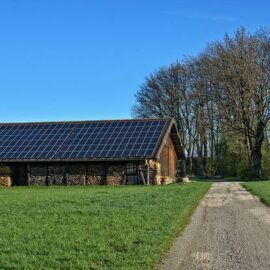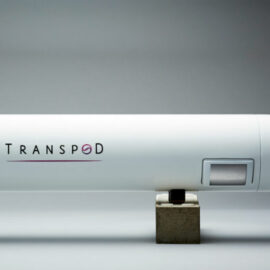
How to make cities a friendly place for residents – especially in summer, when temperatures reach record values? LIFE Tree Check is here to help. It is a project aimed at adapting cities to climate change.
What is LIFE Tree Check?
It is a pro-ecological project aimed at supporting the administration and management of green areas. It is about finding and implementing practical solutions that minimize the effects of climate change in cities. Among such solutions are, among others development of blue and green infrastructure and increasing public awareness of climate change. Specialists in research, analysis and environmental consulting take part in LIFE Tree Check.
– Participation in the project is of various nature – activities carried out by individual partners are tailored to the needs of a given partner city. However, many of the solutions developed will be widely available and will also enable their use in other cities. The common element is the implementation of the TreeCheck Pro software and a training module for city officials – explains Paweł Binkiewicz from the Wrocław-based company Lemitor Ochrony Środowiska, which is one of the project members.
Tree Check Pro software is used to plan public space with adaptation to climate change. It is dedicated to people professionally involved in planning and managing green infrastructure in the city. Its purpose is to help you decide where the planned tree plantings can help the most. The tool allows to predict the benefits of trees over time and to assess in advance the impact of planned investments on the microclimate in the city.
Support for Central and Eastern European cities
The LIFE Tree Check project covered several cities in Central and Eastern Europe. The first Polish city to take part in this pro-ecological project is Wałbrzych, where adaptation measures have already been implemented.
– The plan we have prepared is repeatable. The experience gained and the solutions developed will be disseminated and implemented also in other cities. Their selection will depend on the interest of the authorities of individual cities, who will be free to draw on the experience they have gathered. This is a hint for decision-makers on what to do to make Polish cities friendly to residents – comments Paweł Binkiewicz.
Membership in the project is to help local and regional authorities adapt the urban fabric to climate change, mainly by preventing and minimizing the urban heat island phenomenon.
Together, let’s create a map of the trees in the city
One of the project’s products is the Tree Check application. Thanks to the use of artificial intelligence, it recognizes the tree species based on the photo and allows you to determine its characteristic features. The user learns, inter alia, how much water a tree evaporates, learns the amount of shade it provides and its cooling effect on hot days. Each of the trees can be recorded on a public map, which will ultimately constitute a database of the greenery of a specific area.
– Moreover, the collection of subsequent trees by a given user is recorded, also providing a basis for potential competition. The application is freely available and can be downloaded from Google Play or the App Store. The installation and use of the application is completely free of charge – there are no hidden paid plans or advertisements that make it difficult to use the application – comments Paweł Binkiewicz.
Changes in weather conditions in cities
Due to the densely built-up areas, the urban tissue is susceptible to changes in atmospheric conditions, which are the aftermath of global warming. Heat waves, violent storms and downpours, and gusty winds have become more and more common. The occurring anomalies are especially dangerous during the summer. The high temperatures maintained for at least 3 days mean that the inhabitants are deprived of the opportunity to rest from thermal stress, which poses a threat to their health and life.
One of the negative effects of heat is the so-called urban heat islands . MWC is a local climatic phenomenon consisting in the occurrence of higher air temperature in a city than in peripheral areas. It is created by the accumulation of a large amount of surface consisting of artificial materials (such as concrete or asphalt) that absorb solar radiation. Insufficient green spaces and reduced humidity contribute to the formation of urban heat islands. An additional factor contributing to the formation of MWC is anthropogenic heat, produced by heating and industrial equipment and car traffic.



